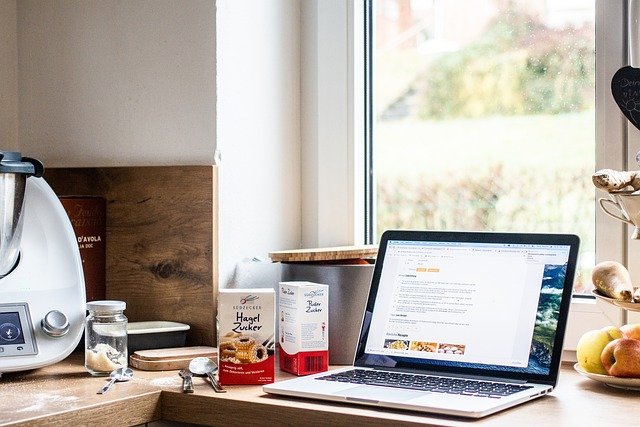Air Fryer Revolution: Healthier, Faster Home Cooking
Air fryers have reshaped home kitchens by delivering crisp, tasty results with far less oil than traditional frying. Ideal for health-conscious cooks, these compact appliances speed up meal prep, save energy, and handle everything from roasted veggies to baked treats. Discover how they can transform everyday cooking and help you enjoy favorite foods with fewer calories and simpler cleanup.

Air Fryer Revolution: Healthier, Faster Home Cooking
What can you cook in an air fryer?
Air fryers are surprisingly flexible for their size. They circulate hot air to create golden, crispy exteriors while keeping interiors moist, so a wide range of ingredients perform well in these units. Popular choices include:
-
Vegetables: Think roasted Brussels sprouts, crispy zucchini sticks, and caramelized carrots.
-
Proteins: Chicken thighs and breasts, salmon fillets, pork chops, and firm tofu cubes all cook quickly and develop a satisfying crust.
-
Frozen convenience foods: From frozen French fries and mozzarella sticks to onion rings and breaded shrimp, air fryers reliably crisp up frozen items without extra oil.
-
Baked goods: Small batches of cookies, muffins, and even mini cakes can be baked in many air fryer models, making them a handy multitasker.
Because of these capabilities, the air fryer often replaces multiple appliances in small kitchens and inspires experimentation with new textures and recipes.
Benefits of using an air fryer
Air fryers offer several practical advantages over classic frying and even some oven methods:
-
Healthier cooking: By using little to no oil, air fryers cut down on added fats and calories compared with deep frying, while still producing a crispy finish.
-
Time savings: They heat up fast and often shorten cooking times versus conventional ovens, making them useful for quick weeknight meals.
-
Energy efficiency: Their compact chambers and rapid heat distribution typically consume less energy than heating a full-size oven.
-
Easy cleanup: Most removable baskets and trays are dishwasher-safe or simple to hand wash, reducing post-meal chores.
-
Versatility: Air fryers can fry, roast, bake, and reheat, so they function as a multi-mode countertop appliance.
This article is for informational purposes only and should not be considered medical advice. Please consult a qualified healthcare professional for personalized guidance and treatment.
Limitations to consider
Air fryers are not perfect for every cooking scenario. Keep these trade-offs in mind:
-
Capacity limits: Many models have modest baskets that are best for singles, couples, or small families. Larger gatherings may require multiple batches or a bigger unit.
-
Learning curve: Getting the ideal browning and internal doneness can take several tries, especially when adapting recipes meant for ovens or deep fryers.
-
Noise: The fan that powers rapid air circulation can produce noticeable sound, which may be distracting in quiet kitchens.
-
Counter space: Their footprint can be significant on a small counter, so measure before you buy.
-
Upfront cost: High-quality air fryers range in price; while they may save on oil and sometimes energy, the initial purchase can be pricier than simpler appliances.
How air fryers compare to other appliances
Below is a quick comparison of common kitchen devices and how they stack up against an air fryer in cooking method, energy use, versatility, and typical price range.
| Appliance | Cooking method | Energy efficiency | Versatility | Typical price range |
|---|---|---|---|---|
| Air Fryer | Rapid hot-air circulation | High | Medium–High | $50 - $300 |
| Convection Oven | Hot-air circulation with fan | Medium | High | $200 - $1,000 |
| Deep Fryer | Oil immersion | Low | Low | $30 - $150 |
| Microwave | Electromagnetic heating | High | Medium | $50 - $500 |
| Toaster Oven | Radiant heat | Medium | Medium | $30 - $200 |
Prices, rates, or cost estimates mentioned are based on the latest available information and may change over time. Independent research is advised before making financial decisions.
Choosing the right air fryer for your kitchen
When shopping for an air fryer, focus on features that match your routine and space:
-
Capacity: Select a size based on how many people you typically cook for. Look for liter or quart measurements to compare models.
-
Temperature range and controls: Adjustable thermostats and precise digital controls help you get consistent results. Preset programs are useful for common foods.
-
Ease of cleaning: Nonstick, dishwasher-safe baskets and removable trays reduce maintenance time.
-
Build and brand reliability: Read user reviews and consider brands with good warranties and available replacement parts.
-
Value: Balance features against price. A mid-range model often delivers most practical benefits without the premium cost of high-end units.
Practical tips for better results
-
Avoid overcrowding: Leave space around items so hot air circulates and crisps evenly.
-
Lightly coat with oil when needed: A small spray or brushing can improve browning without negating the health benefits.
-
Shake or flip: For fries and small pieces, shake the basket halfway through cooking to promote even crisping.
-
Use accessories with care: Racks, pans, and silicone liners expand possibilities but may alter cooking times.
Final thoughts
Air fryers have carved out a useful niche by offering a healthier, faster way to achieve crispy textures and warm, flavorful meals. They are especially valuable in smaller kitchens or for cooks who want a convenient, energy-efficient alternative to deep frying. While not a wholesale replacement for ovens or grills, an air fryer is a versatile, time-saving tool that can upgrade everyday cooking and reduce oil use without sacrificing taste.





